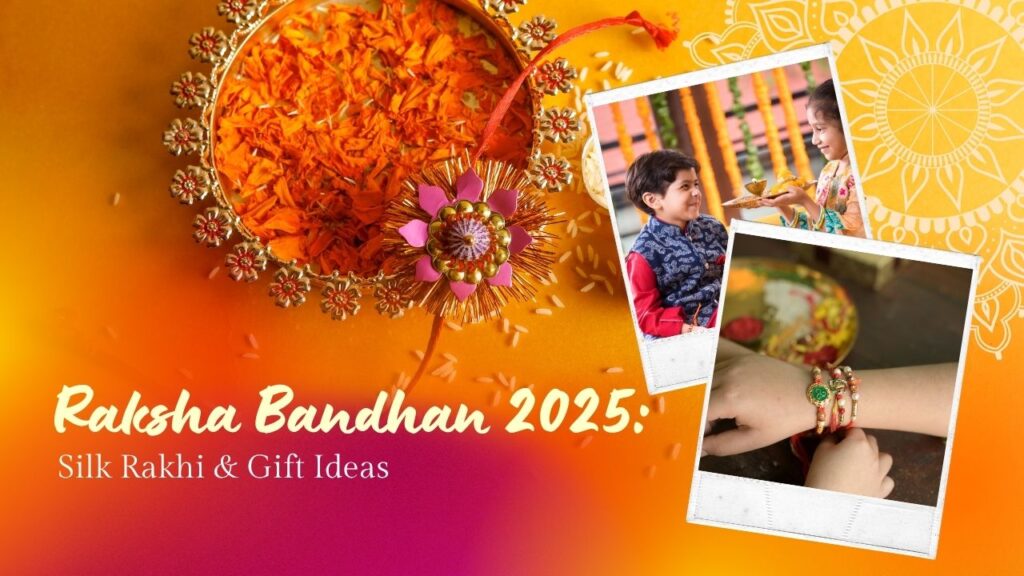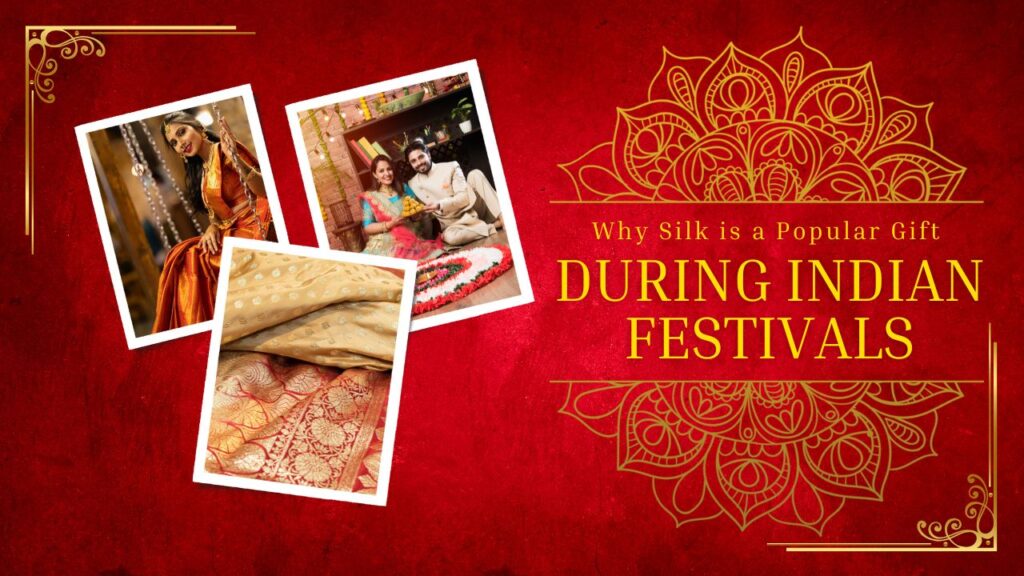Silk is more than just a good-looking fabric. It is spun from history, tradition, and symbolism. Silk gifts for weddings are not only fashionable, they are also a sincere gesture of culture, heritage, and prosperity.
From the crisp Kanjeevaram saree to the faint glimmers of Banarasi silk, the gift of silks is eternally chic and beautiful. A silk gift is suitable for a wedding if you are a close relative, a family friend, or the bride’s best friend in search of a heartfelt gift.
Let us see the rich traditions and some smart tips for gifting silk sarees for a wedding that remains endearing and elegant forever.
The Cultural Significance of Silk in Weddings
Silk has always enjoyed a sacred status in Indian weddings. It is not just a piece of fabric, but rather a symbol of purity, wealth, and worthy beginnings. In South Indian weddings, the bride traditionally wears a Kanjeevaram silk saree, while in North India, silk lehengas and dupattas hold equal importance.
Even beyond India, the cultures of Southeast Asia, China, and the Middle East considered silk a fabric for royals. Historically, it was associated with nobility and rituals. Gifting silk in weddings isn’t just beautiful; it’s steeped in spiritual and cultural reverence.
Why Silk Makes a Thoughtful Wedding Gift
You really cannot miss anything with silk. It’s time to understand the reasons why:
- Timeless Elegance: A silk saree or dupatta is never out of fashion, as opposed to trendy clothing.
- Heirloom Value: Several families gift silk sarees to younger generations.
- Versatility: Silk wear can be styled in numerous ways for post-wedding functions or festivals.
- Symbolism: It represents purity, commitment, and a prosperous future, all the things one would want to gift to a new couple.
Gifting silk to a guest strikes just the right balance of thoughtfulness and Indian culture. It shows that one values an investment in something worthwhile and lasting.
Choosing the Right Silk Gift
So many varieties of silks could overwhelm the mind, trying to think whether the brides would appreciate a particular variety. Here’s a cheat guide:
- Kanjeevaram: For the traditional bride. Heavy, luxurious, and regal.
- Banarasi: Fine-named details for a North Indian wedding.
- Chanderi or Tussar: For their contemporary wedding or trousseau.
- Paithani or Patola: For the ceremonies in Maharashtra and Gujarat.
Think about the personality of the bride. The bride who loves vibrant colors and heavy zari should be pampered with a heavy Kanjeevaram. Select either subtle silk or something with petite motifs or pastels for the understated, modern bride.
Silk could also be gifted as a dupatta or even a silk scarf, stole, or clutch that has been embroidered or handwoven and can be treasured by the bride.
Wedding Traditions Involving Silk Gifts
Silk gifting isn’t just for the bride. It’s a whole ritual of its own in many Indian communities:
- Bride’s Trousseau: Often filled with a variety of silk sarees for different ceremonies and occasions post-wedding.
- Groom’s Family Gifting the Bride: In South Indian customs, the groom’s side gifts sarees, including the wedding attire, as part of the ‘muhurtham’ ritual.
- Return Gifts: Families often give silk items as return gifts to close relatives or guests after the wedding.
- Pooja Rituals: Silk is gifted during religious ceremonies or blessings before the big day.
Tips for Gifting Silk
Okay, so you’ve decided to gift silk. Here’s how to do it right:
- Choose a Reliable Store: Always do your shopping with known brands or certified weavers to make sure of authenticity.
- Check for Handloom Mark or Silk Mark: Those will say that the silk is original and that the quality is very good.
- Go for Colors: Red, gold, green, and maroon are considered auspicious for weddings.
- Customization: Monogrammed borders, initials, or personalized embroidery give it sentimental value.
- Stay Away from Fashion-Forward Designs: Go for classics, unless you know the bride would love it.
- Make Presentation Count: Wrap it well. Silk needs a royal unboxing experience.
Modern Twists on Silk Gifting
Gifting is dynamic and should evolve over time. You can elevate your silk saree gift by pairing it with other practical stuff, such as silk scrunchies, pillowcases, travel kits, etc. Also, don’t forget to make the presentation appealing as well. If you’re giving something so exquisite, the unboxing experience also counts.
In a Nutshell
Silk is more than a fabric; it is a tradition bundled in sartorial elegance. Gifting silk sarees for wedding tradition and tips is a gesture that glorifies the sanctity of marriage while throwing in a personal, luxurious touch. Whether going the old-school way with a good ol’ Kanjeevaram or branching out with cool contemporary silk hampers, your gift will never be misplaced. With a good gift thoughtfully presented, maybe with a dash of love, a silk gift can weave memories that last for generations.
Frequently Asked Questions (FAQs)
1. Why is silk considered a traditional wedding gift?
Silk is considered auspicious in many cultures due to its association with purity, prosperity, and timeless beauty. It symbolizes a wish for a happy, prosperous married life.
2. What type of silk is best for wedding gifts?
Kanjeevaram, Banarasi, and Paithani are top choices for traditional weddings. For modern tastes, lighter silks like Tussar or Chanderi work well.
3. Is it appropriate to give silk as a wedding gift in all cultures?
While most Indian and Southeast Asian cultures appreciate silk gifts, it’s best to consider the couple’s preferences and cultural context.
4. How do I know if the silk is genuine?
Look for silk mark certifications or buy from trusted brands. Genuine silk has a natural sheen and smooth texture and may have slight irregularities—proof that it’s handmade.
5. What’s the best way to wrap a silk wedding gift?
Use satin-lined boxes or cloth gift bags. Add a ribbon or embellishment for elegance. Avoid plastic wraps, which can trap moisture.
6. Can I personalize a silk gift?
Absolutely. Monograms, embroidered initials, or hand-painted motifs make the gift extra special and unique.
7. Are there ethical or eco-friendly silk options?
Yes, Ahimsa silk or Peace silk is made without killing the silkworms. Some brands also offer handloom, naturally dyed silks that are sustainable and ethical.



